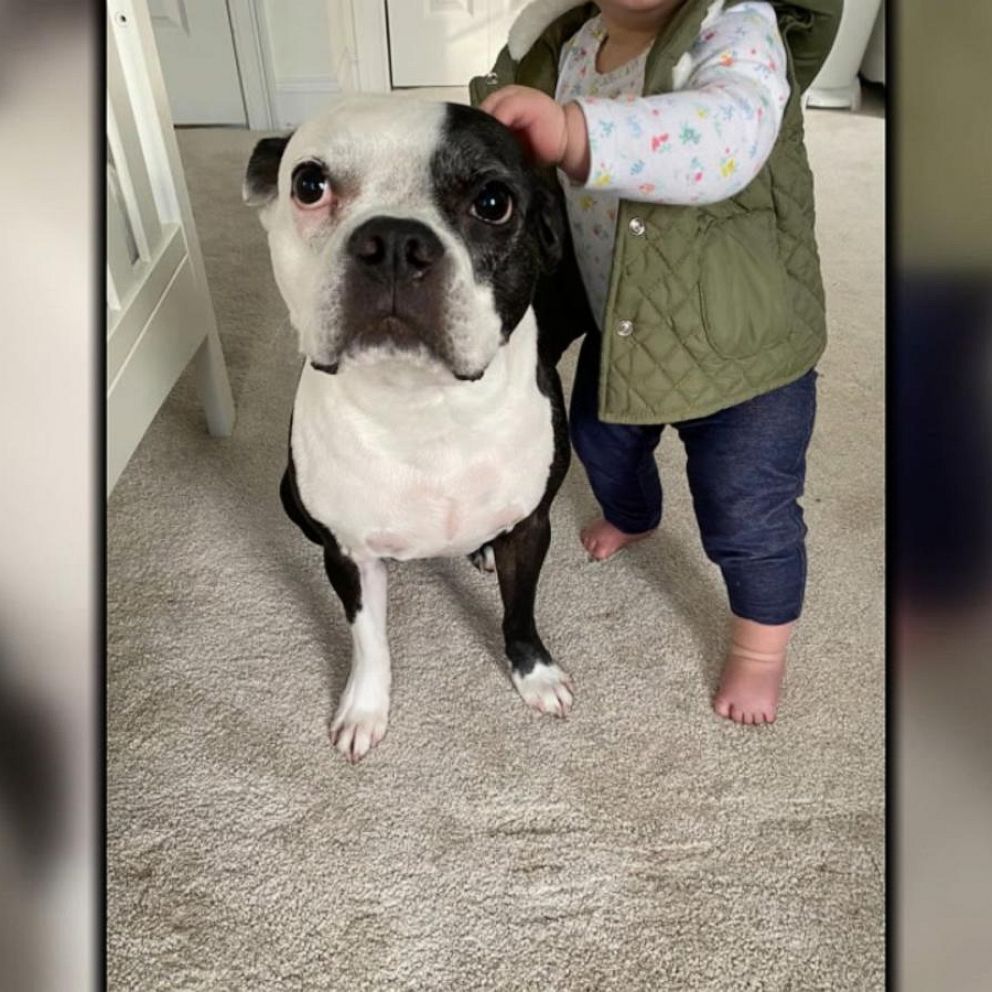An Indiana woman is crediting a dog she rescued just nine months ago with saving her life at the end of June.
Samantha Griffin, a 38-year-old social worker, told "Good Morning America" she moved into a new apartment in Marion, Indiana, with her niece and rescue dog Luna at the end of May and throughout the next several weeks, her smoke and carbon monoxide detector would periodically go off.
"My fire alarm kept going off and we assumed that it was a battery [issue] because as soon as we unplugged it, it would stop," Griffin said. "So we just kept thinking it was a power issue. But when Luna started acting up and then I started getting a headache, we [were] just like, something ain't right."

On June 24, Griffin said she was the only one home with Luna, whom she rescued from Speedway Animal Rescue last September, when she started getting "a really bad migraine" and tried to rest.
"I normally get migraines so that's not out of the norm but for her not to let me sleep when I have that kind of migraine was what was odd," she said.
According to Griffin, Luna, a Siberian husky estimated to be about two years old, started acting up and wouldn't let up instead of being her normal self, sleeping on the couch or playfully tearing up the apartment.

"All day long, she was bugging me to go outside. And normally she don't do that," Griffin said.
"She started pouncing on me – I think I still have bruises from where she's hit me – and she scratched up my door and stuff like that, trying to get out so, she was alerting us way before the alarm even went off," she continued.

Griffin said she went outside with Luna and called her building's maintenance staff, who then alerted the local fire department.
Griffin said first responders seemed shocked after they determined she had a significant carbon monoxide leak in her apartment and told her Luna saved her life that day.
"The gas company sent out somebody because they had to pinpoint where it was. And he said that it was 97 [parts per million] in my apartment, which he said, during their training, if you're in a place that's 50 [parts per million] or above for more than a half hour, you're dead," Griffin recounted. "And he said, 'I don't know how you lived.'"
According to the Centers for Disease Control and Prevention, "a 1-hour exposure to 1,000 to 1,200 ppm would cause unpleasant but no dangerous symptoms, but that 1,500 to 2,000 ppm might be a dangerous concentration after 1 hour."
Griffin said she was later told that there had been a carbon monoxide leak because a bird's nest was in the flue of her building's gas water heater, which was also replaced afterward.
The CDC notes that carbon monoxide is a gas with no odor or color that can cause illness or even death if inhaled, something that can occur without warning. The gas is in car and truck fumes, engine fumes, stove, gas range and grill fumes, furnace fumes, and more. When inside, they can build up and cause carbon monoxide poisoning in people and animals.
Carbon monoxide poisoning sends over 100,000 people to hospital emergency rooms each year and causes the death of over 400 Americans a year.
The symptoms of carbon monoxide poisoning include dizziness, a headache, an upset stomach, vomiting, chest pain, confusion, weakness, or symptoms similar to that of the flu.
Today, Griffin said she and Luna are doing better and that Luna, who had briefly stopped eating, has begun eating again and returned to her playful self.
"Luna did save my life that day. If she hadn't gotten me out, I definitely probably would have fallen asleep and just died," Griffin said.
"I'm just so overwhelmed, grateful for all of it. Because I don't know where I'd be right now without her," she added of Luna, who she said, amazes her "every day."
Griffin said she wanted to share Luna's story publicly to encourage others to consider rescuing animals.
"Dogs can be amazing. They're not just an animal or just a pet. They can be family," she said.
The social worker also said she wanted to remind people to install and check their carbon monoxide detectors at home.
"Don't ignore your [carbon monoxide] alert," Griffin said. "Make sure you have one and make sure you don't ignore it."
"The fire marshal here says to make sure, if you have a gas stove, gas water heater, anything like that, to make sure it's checked at least once a year," she added.
The CDC recommends replacing carbon monoxide detectors every five years.







